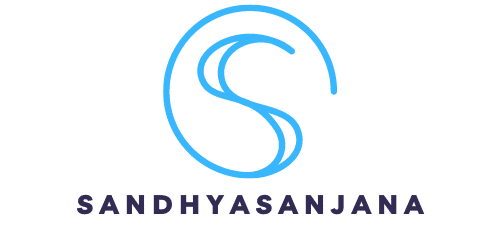You might be familiar with the image of a child with ADHD—seemingly always on the move, difficulty focusing, and often emotionally volatile. For parents and practitioners alike, it can be a challenging road to walk. However, an innovative form of psychotherapy, known as Dance Movement Therapy (DMT), has shown promise in providing therapeutic support to these children. This article aims to discuss how DMT can aid in emotional regulation for adolescents with ADHD, focusing on the key components of this body-based therapy, the efficacy of group sessions, and the data from research studies behind this intervention.
Understanding Dance Movement Therapy
DMT, also known as Dance Movement Psychotherapy (DMP), is an expressive form of therapy that uses movement to promote emotional, cognitive, physical, and social integration. Children are encouraged to express their emotions through their bodies and to reflect on the feelings elicited by their movements.
Lire également : How Can Smartwatches Assist in Monitoring Hydration Levels During Endurance Sports?
For children with ADHD, who often struggle with emotional regulation and impulse control, DMT provides a constructive outlet. The therapy builds on their natural inclination towards movement, channeling it into a therapeutic process that helps them understand and manage their emotions. DMT is also a non-verbal form of psychotherapy, providing a comfortable approach to children who may struggle with traditional talk-based therapies.
The Importance of Group Sessions in DMT
Often, DMT sessions are conducted in groups. The communal nature of these sessions offers a rich environment for children with ADHD to develop social skills, empathy, and a sense of belonging. The group setting allows for peer interaction, communal problem-solving, and joint creativity.
A voir aussi : What Are the Effects of Virtual Reality Exposure Therapy on Phobia Treatment Success Rates?
The group dynamics in DMT also provide opportunities for mirroring — a process where one child’s movement is reflected by another. Mirroring can provide validation and recognition, crucial aspects in the emotional development of an ADHD child.
Empirical Data Behind DMT for ADHD
While DMT has been employed as a therapeutic tool for several decades, it is only in recent years that empirical data has begun to substantiate its efficacy for ADHD.
Studies examining the use of DMT in children with ADHD have reported several key findings. The therapy has proven beneficial in improving emotional regulation, reducing hyperactivity, and improving social functioning. Also, parents and teachers of children who have participated in DMT have reported improvements in behavior and emotional control.
One study examined the effects of a 12-week DMT intervention on a group of adolescents with ADHD. The researchers utilized various measures to assess changes in the participants’ emotional regulation and ADHD symptoms. The data revealed significant improvements in emotional regulation and a reduction in ADHD symptom severity.
How DMT Promotes Emotional Regulation
Emotional regulation is a complex process that involves identifying, managing, and responding to emotions in a way that is socially acceptable and flexible. For children with ADHD, emotional regulation can be particularly challenging. However, DMT can provide these children with a unique platform to explore and express their emotions.
In DMT sessions, children are encouraged to embody different emotional states through dance and movement. By doing so, they gain firsthand experience of how different emotions feel in their bodies. This helps them to identify these emotions as they arise in real-life settings, and to develop strategies to manage them.
Moreover, the physical act of movement can also serve as a coping mechanism. When children with ADHD feel overwhelmed by their emotions, they can use dance and movement as a physical outlet to express and manage their feelings.
The Future of DMT for Adolescents with ADHD
The promising results of DMT for children with ADHD are encouraging. However, more research is needed to further understand this therapeutic approach. Future studies should aim to include larger sample sizes, extended follow-up periods, and control groups to fully establish the efficacy of DMT for emotional regulation in adolescents with ADHD.
While the journey towards understanding and managing ADHD in adolescents remains challenging, it is therapies like DMT that provide hope and practical solutions. Although DMT might not be the panacea for every child with ADHD, it offers a unique, engaging, and beneficial tool to support emotional regulation and overall mental health in this population.
The Role of Mirroring in DMT
Mirroring is a fundamental technique employed in dance movement therapy (DMT). This technique involves one individual mimicking the movements of another, effectively creating a non-verbal dialogue of empathy and understanding. In the context of adolescents with ADHD, mirroring can serve as a powerful tool for emotional regulation and social integration.
Adolescents with ADHD often struggle with social cues and empathy, which can result in feelings of isolation or misunderstanding. Through the practice of mirroring, these children can gain a deeper understanding of their peers’ emotions and experiences. They can see their actions and emotions reflected in others, which can validate their feelings and experiences.
Furthermore, mirroring can provide adolescents with ADHD the opportunity to observe, understand, and replicate socially acceptable behaviors. By copying their peers’ movements, they can learn how to respond appropriately in social situations. This can lead to improved social skills and better peer relationships, both of which are crucial for their emotional health and quality of life.
The Impact of DMP Intervention on ADHD Symptoms
Several studies have demonstrated the positive impact of dance movement psychotherapy (DMP) interventions on the symptoms of adolescents with ADHD. The findings from these studies are promising, indicating that DMP could be a viable alternative or adjunct to traditional ADHD therapies.
A study published on Google Scholar involved a 12-week DMP intervention with a control group and an intervention group. The adolescents in the intervention group showed significant improvements in their emotional regulation and a reduction in ADHD symptoms compared to the control group.
Another study examined the effects of a pre-post DMP intervention on adolescents with ADHD. The results showed a noticeable reduction in hyperactivity and impulsivity, as well as improved social functioning and emotional control post-intervention.
These studies, along with others in the field of arts therapies, provide empirical evidence supporting the efficacy of DMP as a therapeutic approach for adolescents with ADHD. Further research is needed to confirm these findings and to further explore the mechanisms of DMP in promoting emotional regulation and reducing ADHD symptoms.
In Conclusion: The Power and Potential of DMT in ADHD Therapy
Dance movement therapy (DMT) is rapidly gaining recognition as a potent tool in ADHD therapy. Its unique approach of using movement to promote emotional, cognitive, and social integration aligns perfectly with the needs of adolescents with ADHD.
The empirical studies, although limited, are promising. They demonstrate the potential of DMT in improving emotional regulation, reducing hyperactivity, and enhancing social functioning in adolescents with ADHD. The use of mirroring and other DMT techniques in group sessions provide children with ADHD a communal environment that fosters empathy, understanding, and social skills development.
Interestingly, DMT also offers a non-verbal approach to psychotherapy, making it a comfortable alternative for children who may struggle with traditional talk-based therapies. This makes DMT not just effective, but also engaging and enjoyable for the children involved.
Understanding the immense potential of DMT does not negate the need for further research. Studies with larger sample sizes, control groups, and extended follow-up periods are essential to fully establish the efficacy and long-term benefits of DMT for adolescents with ADHD.
The journey towards finding effective therapies for ADHD is indeed a challenging one. However, innovative and engaging therapies like DMT provide hope and tangible solutions. As we continue to explore and validate such therapies, we take crucial steps towards improving the mental health and quality of life for adolescents with ADHD.
By harnessing the power of dance and movement, we are not just teaching children with ADHD how to move—we are teaching them how to feel, understand, and control their emotions. And that’s a dance worth learning.






